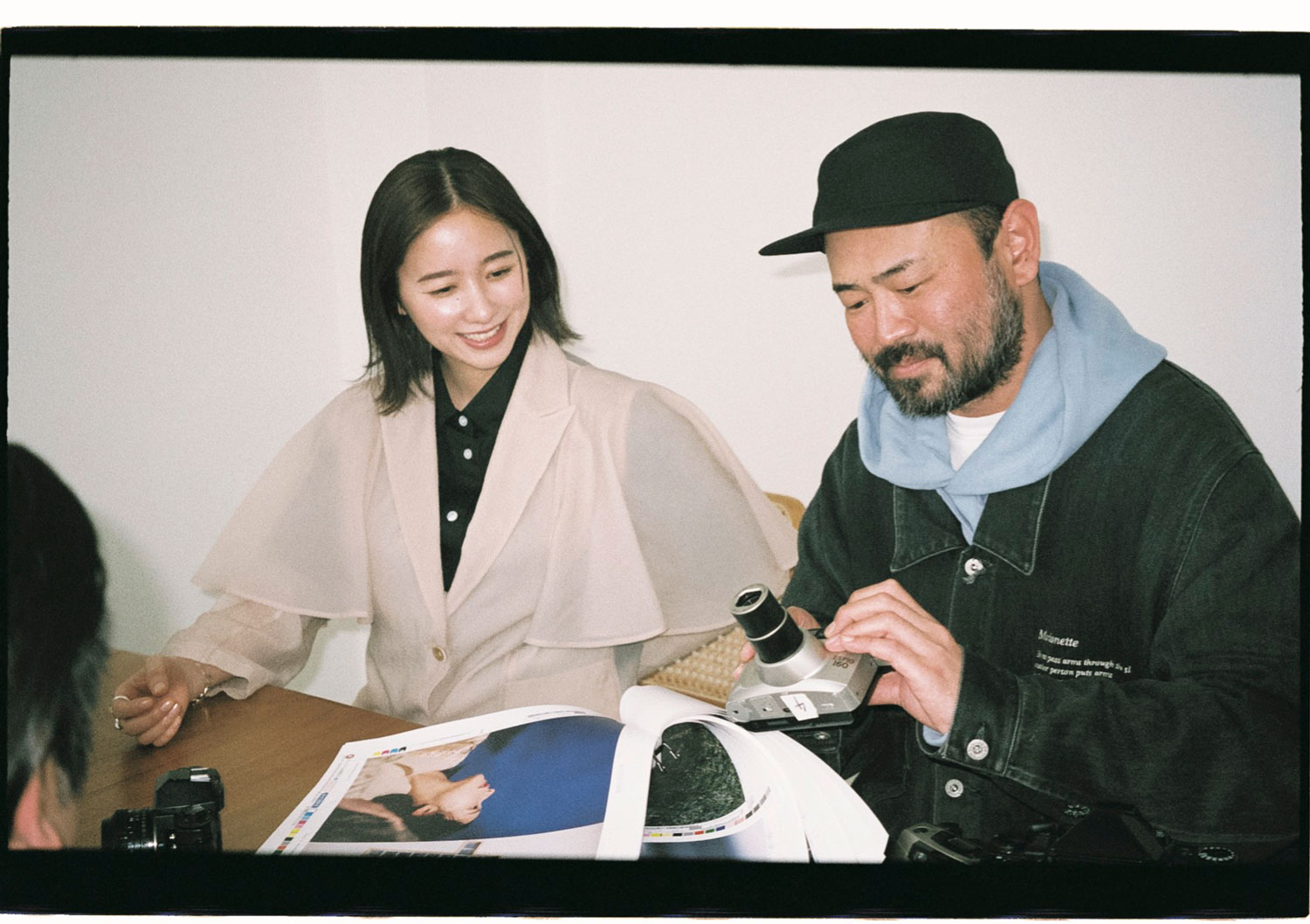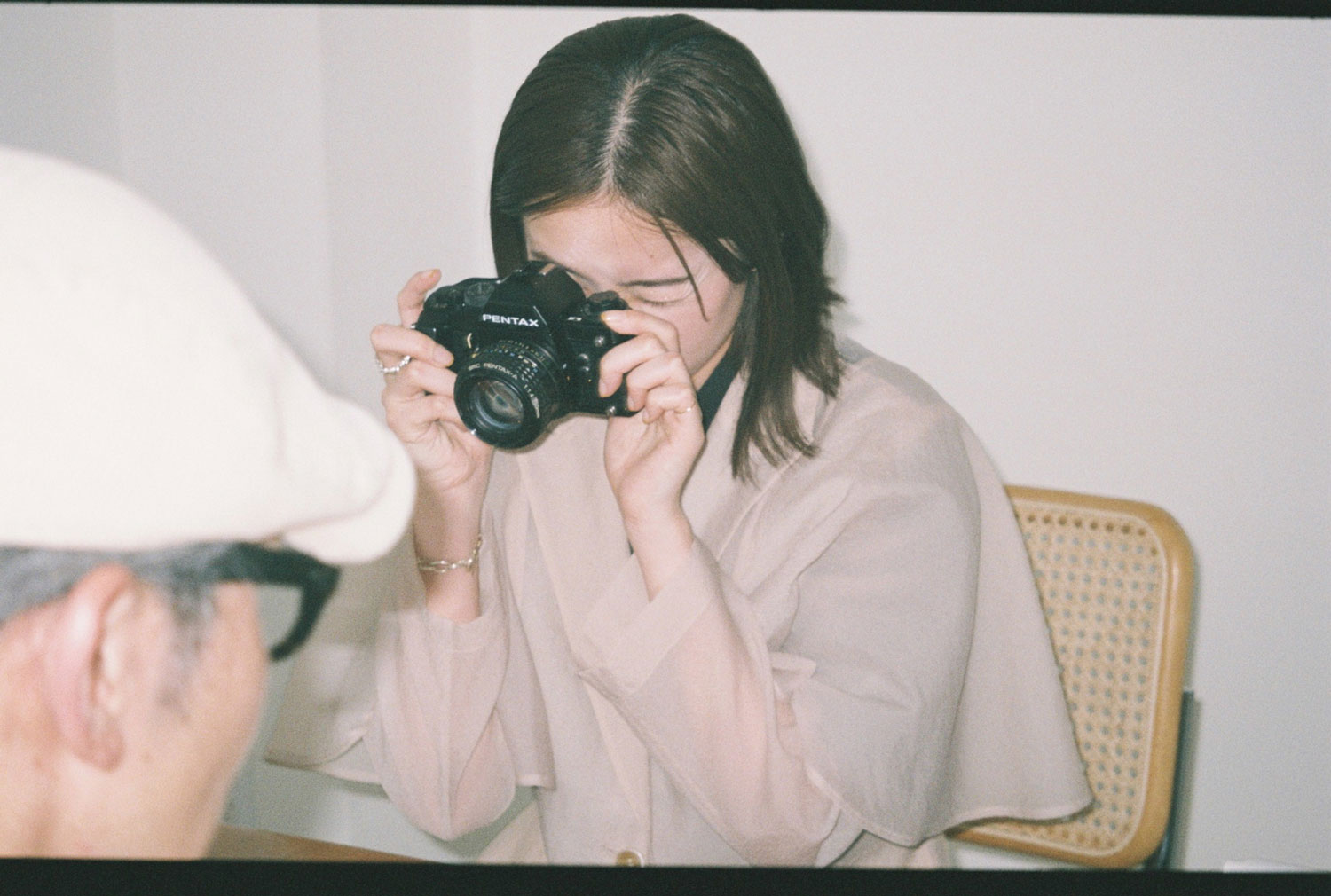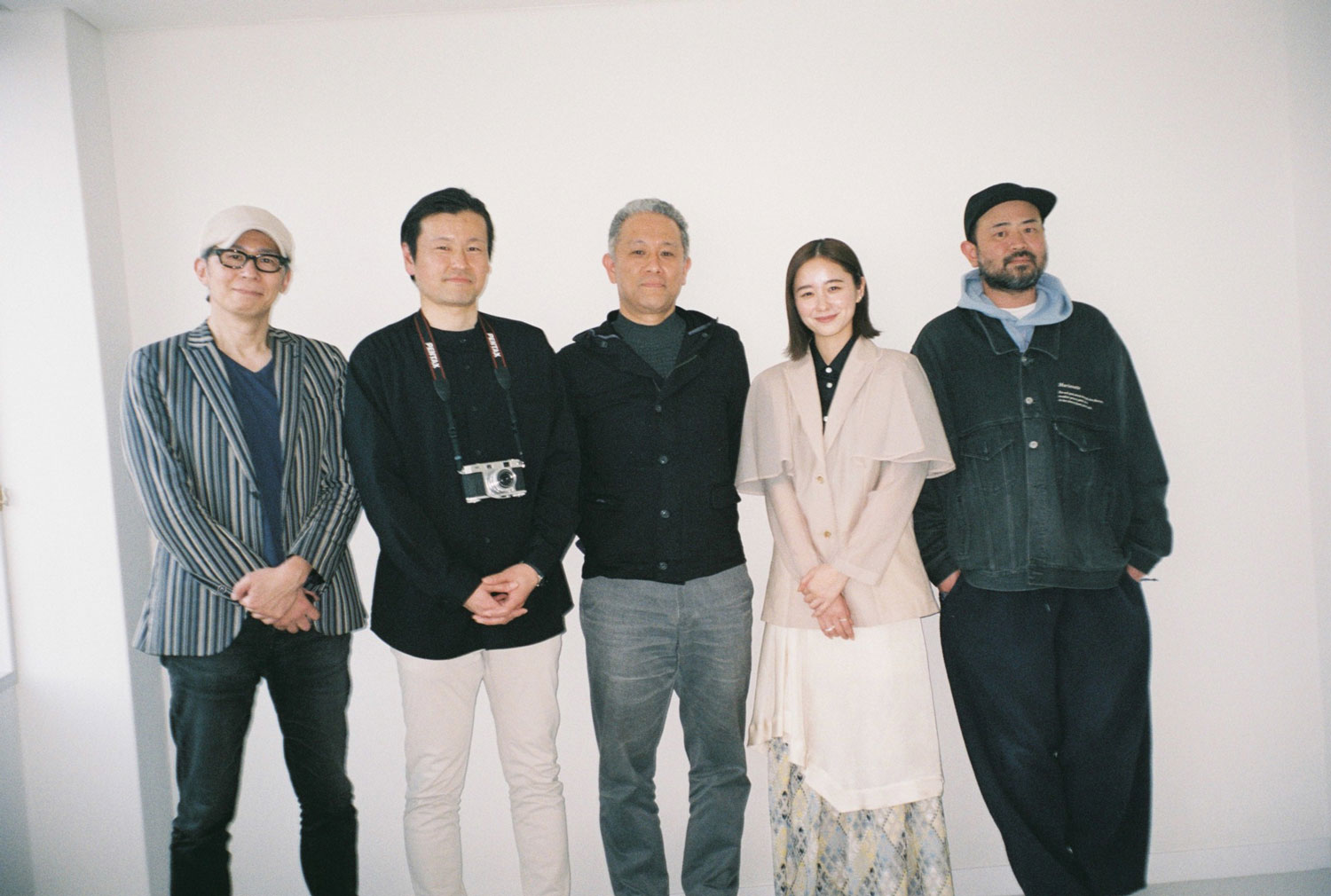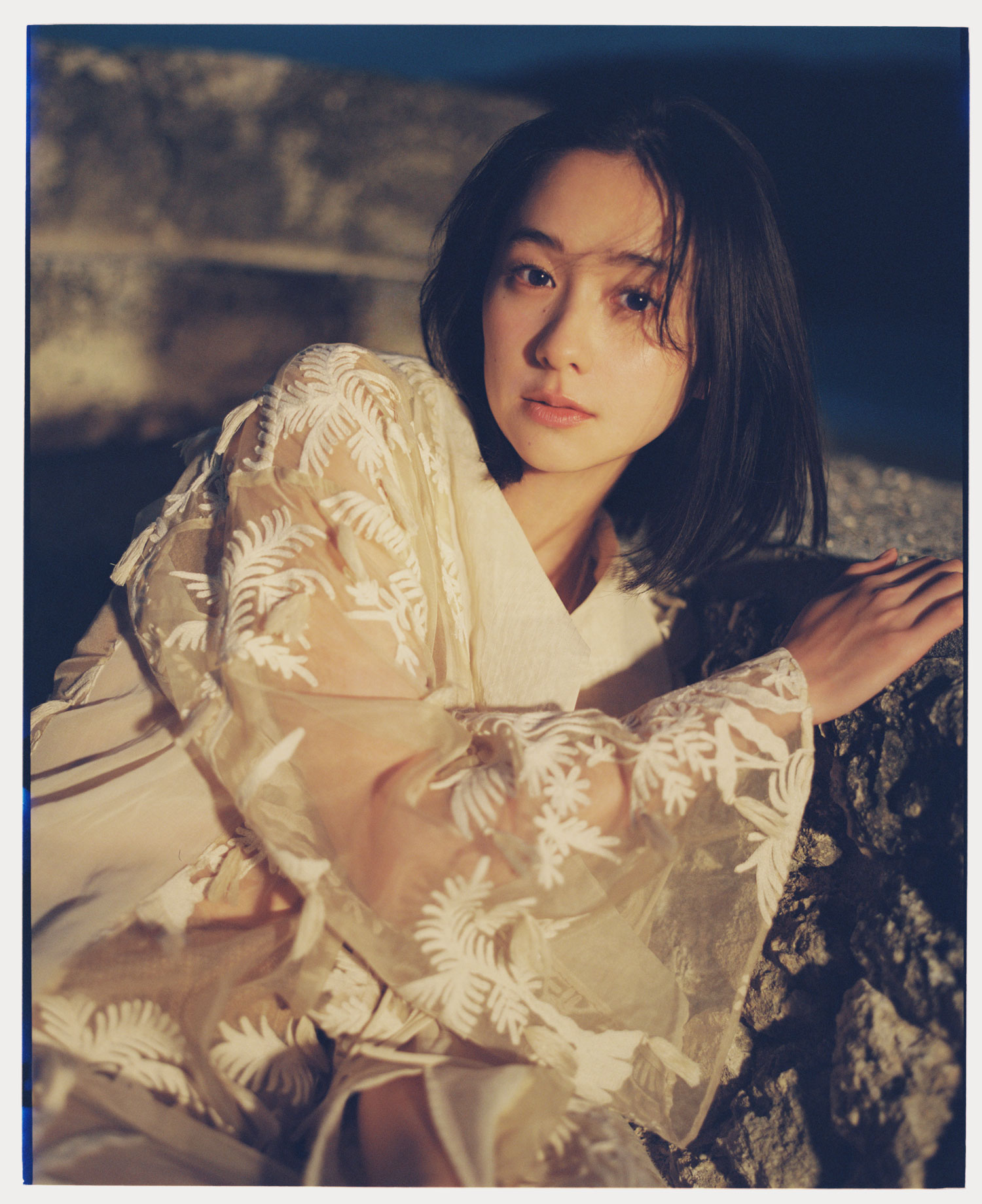FEATURE

Short series PENTAX Film Project Club House Diary vol. 2 Guest: Mayu Hotta x Ittetsu Matsuoka
APR. 17 2023, 12:00PM
Photography / Kyohei Nambu Styling / Masami Matsuo Hair & Makeup / Mikiko Suzuki Text / Akane Domae
BARFOUT!: Ms. Hotta, what led you to your first encounter with a film camera?
Hotta: I think it was around the time “Utsurun Desu” started to become popular. More and more friends around me were starting to take photos easily, and one day, I asked my parents if they had any cameras they used in the past, and they told me they had a compact camera made by Fujifilm, so I started using it. Many of my friends around me, including those with digital cameras, were buying older cameras rather than buying newer model cameras.
BARFOUT!: Mr. Matsuoka, you always use the PENTAX 67Ⅱ when taking portraits, don’t you?
Matsuoka: Yes, that’s right. My first encounter with PENTAX was when I was working as a studio worker and bought this PENTAX 67 II. So it’s been about 20 years since then (laughs). I also use a PENTAX compact camera for work, but I don’t know if it’s the way I use it – I press it a lot (laughs) – but it often breaks down. In a way, it’s sort of like a consumable item. However, there were many times when I liked the broken-down look of the photos (laughs).
Suzuki: One of the issues with film cameras is that even if you want to repair them, they cannot be repaired, so we want to make film cameras that can be repaired properly and used with peace of mind.
BARFOUT!: What do you think is the appeal of film cameras and film photography?
Hotta: Even if you fail, it’s still kind of fun (laughs). Even if a line shows up on the photo, you will want to save it as a piece of your memory. When I travel, I take photos with my cell phone just in case, but I also take a film camera with me to capture various memories. I’m happy when I capture good shots, and the atmosphere is just completely different, isn’t it?

Tabei: What kind of photos do you usually take?
Hotta: I take a lot of photos of landscapes and scenery. It’s interesting to see the sky change its expression every day. The same is true of the ocean, but I really like the color blue, and I especially like to photograph the blues that you see in nature. We went to Amami Oshima where Mr. Matsuoka took photos for my photo book, and I brought my film camera there as well.
BARFOUT!: The color proofs (trial prints) were brought here today, so I hope we can talk about them while looking at them.
Matsuoka: (While flipping through the color proofs) This photo was shot with the PENTAX 67 II. Oh, and this one too.
Iikawa: That makes me super happy to hear.
Suzuki: The colors come out very beautifully.
BARFOUT!: Ms. Hotta, I’m sure many of your shoots for fashion magazines are done with digital cameras, but do you feel any difference between shooting with a digital camera and shooting with a film camera?
Hotta: Well, with a film camera, you can’t check the photos on the spot you know? So it’s like you are entrusting your heart that they come out alright. Even while leaving it all up to the camera, I often ask myself, “Is this the kind of atmosphere that they are looking for?” and try to figure out what I can do myself. There is no doubt that shooting with a film camera will result in something with a unique atmosphere, so I am also conscious of trying to be my natural self. I try not to think too much about the fashion aspect and also try to keep a natural expression on my face. Even if my eyes are half-open, I think it’s okay as long as the photo turns out good.

BARFOUT!: The shutter sound of the PENTAX 67 II is quite unique, but does that not bother you?
Hotta: It makes a loud “click, click, click” sound (laughs). It’s actually rather pleasant. If there is no sound when the picture is being taken, I can’t tell at what point the shutter is being released. Sometimes that’s a good thing, but (if there is sound) I can tell when the exact moment the photo is being taken, and I like the feeling of being photographed and taking photos while communicating with each other. This was actually the second time I worked with Mr. Matsuoka for this photo book. But this time, when I was asked who I would like to work with, I remember how much I enjoyed Mr. Matsuoka’s personality when I first met him, so I said I would like to work with him.
Matsuoka: That’s so nice to hear.
Hotta: I think that’s really important. The relationship between the person taking the picture and the person being photographed.
Tabei: Is it sort of like the feeling of breathing?
Hotta: Yes. We were there for five days, so I thought it would be difficult unless both parties could capture the right atmosphere without having to verbalize it.
BARFOUT!: Mr. Matsuoka doesn’t put people on their guard, and being photographed while he is smiling and enjoying himself must be very appealing. I know you have used a variety of cameras, but do you mainly use the PENTAX 67 II in all of your workplaces?
Matsuoka: Yes. After all, it’s the camera that I trust the most. The PENTAX 67 II is a camera that suits me, and while I can control it myself, I can also let it take care of the parts that I want it to take care of. You can change the aperture and such, and take a slightly brighter shot, but it’s also nice to be able to take pictures without having to go completely manual. It really just helps me out in so many ways. And the colors are simply beautiful. There are many people who like Leica or Hasselblad, but I don’t think there is a photographer who is not fond of the PENTAX 67 series. I wonder what it is? It’s like an eye. The focus can be surprisingly rough. I’m not good with machines, so the fact that it can be used intuitively suits me. Digital cameras are a little more challenging (laughs).
Suzuki: We had no idea that the PENTAX 67 series was being used so much in the field. There are many things that I learned for the first time during this project when I was approached by BARFOUT!

Iikawa: It is also very interesting to hear the stories of those who are being photographed. Since we are on the manufacturer’s side, we often hear from the people who are taking the pictures, and the content is mostly about functional aspects (laughs).
BARFOUT!: Ms. Hotta, when using a film camera, is there anything you would like to see improved?
Hotta: I guess it’s not so much the camera itself, but where you develop the film. There is no way I can develop the film myself, so I send it out to a camera shop in town, but I still get a little nervous when I send out private photos of my friends… So, it would be nice to be able to develop the film easily at home.
BARFOUT!: That’s true, the people working at the film lab are able to see what is on the inside of the film.
Hotta: So I have to be selective about the photos I submit.
BARFOUT!: Finally, please tell us about some of the highlights of your photo book!
Hotta: Well, this is my first ever photo book… So I wanted to leave behind an authentic record of the real Mayu Hotta, the 24-year-old me, not the person I am when I am working as both an actor and a model. In doing so, I thought it would be nice if I could communicate with the person taking the photos, so I wanted the photos to be taken with a film camera rather than a digital camera. And because I wanted to shoot in film, I wanted to ask Mr. Ittetsu to do it for me. When you look at the photos taken with the PENTAX 67 II, the colors are vivid and really beautiful, and because they are not all crisp and clear, the important parts are in focus, and I believe that various aspects such as the humidity and other experiences can be conveyed by looking through the photo book even to those who weren’t actually there on the scene. The high humidity of the location can really be conveyed by flipping through the photo book. The quality of film photography is on full display. Also, where we shot, there was no Wi-Fi connection and we were cut off from any outside information, and I felt like I was able to go back to my roots by having my photos taken with a camera that was made a long time ago, rather than as just as data.


From the photo book “MY”. “I also take a lot of pictures with ESPIO and Pentax compact cameras. I also like that you can use a bulb. You can leave the shutter open for a few seconds to take slightly blurry photos. The combination of bulb shooting and strobe lighting is convenient. Sometimes you can take miraculous photos (laughs).” (Matsuoka) “We took a huge number of photos, so it was hard to choose the best ones, but actually the cover shot was taken on the first day, and the back cover was taken on the last day of the shoot.” (Hotta) “As soon as we got there, we were in an uproar because we didn’t have batteries (laughs). We ended up shooting with simple panel lights. There was barely any retouching. Film cameras really don’t require any retouching. Of course, that also has something to do with the fact that Ms. Hotta’s skin is beautiful to begin with (laughs).” (Matsuoka)
INFORMATION OF PENTAX
Film Project / PENTAX | RICOH IMAGING
【WEB SITE】
ricoh-imaging.co.jp
INFORMATION ON MAYU HOTTA
Mayu Hotta’s 1st photo book “MY” (photos by Ittestu Matsuoka) published by Shueisha is now on sale. She is currently starring in the drama “Kimichika Kazama -Kyojo 0-” (Fuji Television Network, Inc.).
【WEB SITE】
www.amuse.co.jp/artist/A8680
【Instagram】
@mayuhotta
INFORMATION ON ITTETSU MATSUOKA
Mayu Hotta’s photo book “MY,” photographed by Ittetsu Matsuoka, is now on sale. His solo exhibition will be held at “amanaTIGP” from April 22 to May 20. From May 25 to July 30, his special exhibition “Tokyo Games” will be held at “SHIBUYA SKY”.
【WEB SITE】
ittetsumatsuoka.com
【Instagram】
@ittetsumatsuoka




